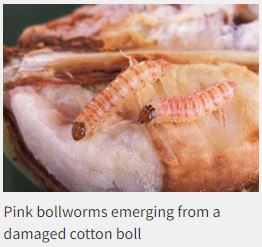Dual Disinfection-Solidification System
National Institute for Interdisciplinary Science and Technology (NIIST) has recently developed a technology that will safely and sustainably manage pathogenic biomedical waste.
- About - Dual disinfection-solidification system is a fully-automated machine
- Aim – It instantly disinfect both liquid and solid biomedical waste, including urine, saliva and blood, bacterial broths, cotton, tissues, swabs, needles, and syringes.
- It converts the degradable wastes into soil additives and lab disposables are prepared for direct recycling.
- This waste can include urine, saliva and blood, bacterial broths, cotton, tissues, and swabs.
Bio-medical waste can be any solid or liquid waste generated during the diagnosis and treatment of living beings or produced during research activities. India produces more than 770 tonnes of bio-wastes per day in 2020.
- Significance - It will prevent the uncontrolled spread of infections.
- Advantages
- Easy and safe
- Less expensive than the current practice of red-bagging
- Reduced cost for healthcare facilities.
|
NIIST
|
- The National Institute for Interdisciplinary Science and Technology (NIIST), Thiruvananthapuram, is a constituent Laboratory of the Council of Scientific and Industrial Research(CSIR).
- Initially established in 1975 as a CSIR Complex, it was named as the Regional Research Laboratory in 1978 and later renamed as NIIST in 2007.
- Its mandate is to conduct research and development in areas related to effective utilization of resources of the region and of fundamental importance to the country.
- Currently, NIIST is engaged in Agro-processing, Chemical Sciences, Materials Sciences, Microbial processes, and Environmental Technology.
|
References
- IE| Biomedical waste into soil additives
- The Hindu Business Line| Biomedical Waste Management
- NIIST | About Us
Naganathaswamy Temple, Tamil Nadu
The Tamil Nadu Department of Archaeology is set to take up restoration of the 1,000-year-old Chola-era Temple at Manambadi in Thanjavur district.
- Also known as - Kailasamudaiyar Temple.
- Built by - Rajendra Chola I (1012-1044CE).
- Dedicated to - Lord Shiva
The temple has been declared as a protected monument in 2014 under the Tamil Nadu Ancient and Historical Monuments and Archaeological Sites and Remains Act, 1966.
- Features - It has exquisite stone sculptures, distinctive makara thoranas (ceremonial arches) and important inscriptions.
- It consists of an ekatala vimana and a mukha mandapa.
Dravidian vimanas can be classified as one-story (called ekatala), two-story (dvi-tala), three-story (tri-tala), and so on.
- Inscriptions – 9 interesting and informative inscriptions during Rajendra Chola I and Kulothunga I (1070-1120 CE) have been recorded from this temple.
- Inscription of Rajendra Chola I - It refers to a grant of land free of taxes by the nagaratthar of Ilaichikkudi for raising a flower garden named after the king for the use of the temple.
- Inscriptions of Kulotthunga I – It is called as Tamizh Koothu and refers to a grant of land called as “Koothu kaani”.
Koothu, also known as Therukoothu (theatre of the street) refers to the folk theatre art form in Tamil Nadu
Reference
The Hindu| Renovation in Manambadi Temple
Conocarpus Plant
The Gujarat government has banned the planting of ornamental Conocarpus trees in “forest or non-forest areas” citing adverse impacts.
- Characteristics - Conocarpus is a fast-growing exotic mangrove species.
- Native - It is native to tropical regions, mostly in parts of North & South America as well as Africa.
- Usage in India - It has been used across India for landscaping of road medians and in public gardens.
Disadvantages
- Effect on Humans - It flowers in winter and spread pollen in nearby areas, thus causing diseases like cold, cough, asthma, allergy etc.
- Effect on Infrastructure - Roots of this species go deep inside the soil and damages telecommunication lines and drainage lines.
- Effect on Environment - Damages the freshwater systems and unpalatable to plant-eating animals.
Earlier, Telangana had also banned the plantation of Conocarpus plants
|
Other banned Species
|
|
Vilayati Kikar
(Prosopis juliflora)
in New Delhi
|
- It is not native to Delhi and was brought in by the British during 1930s.
- Significance – It grows fast even in arid conditions and quickly increases the green cover, and can also be used as firewood.
- Impact on Environment – It destroys the the native trees like acacia, dhak, kadamb, amaltas, flame-of-the-forest, etc.
- Birds, butterflies, leopards, porcupines and jackals were also disappeared along with the trees.
- It also depletes the water table of the area it is planted in.
- Actions taken - In 2018, the Delhi government agreed to clear it.
- In 2016, the Madras High Court too passed an interim order to remove this species.
|
|
Acacia & Eucalyptus
in Kerala
|
- British introduced the Eucalyptus tree in Munnar, Kerala.
- Importance – Eucalyptus wood was used as fuel in tea plantation boilers.
- Impact- The foreign invasive plants had reduced the availability of fodder in forests, forcing animals to foray into settlements resulting in man-animal conflict.
- Actions taken - The Kerala state forest department stopped the cultivation of acacia and eucalyptus in forest tracts in 2018.
|
Reference
Indian Express | Ban of Conocarpus Plant
Pink Bollworm
Recently, the Rajasthan government declared relief for farmers whose cotton crops have been affected due to pink bollworm infestations.
- Pink Ball worm - Pectinophora gossypiella
- Threats - It is a major pest of cotton that feeds on the seeds and destroy the fibers of cotton, reducing quality and crop yield.
- Challenges - Bt cotton which are toxic to the American bollworm has lost its efficacy against PBW.
- This is because PBW is a monophagous pest that feeds mainly on cotton unlike American bollworm that is polyphagous, with alternative hosts.

Control measures
- Spraying insecticides – Such as profenofos, chlorpyrifos, indoxacarb, and cypermethrin.
- Mating disruption – It involves deploying Gossyplure, a pheromone signalling chemical which attracts the male adult moths into lures and prevent from mating with females.
- The Central Insecticides Board & Registration Committee under the Agriculture Ministry has approved two mating disruption products.
- PBKnot – It is a dispenser having a 20-cm hollow polyethylene pipe, into which Gossyplure is impregnated and gets released from over 90 days and reducing the scope for infestation.
- SPLAT-PBW - A flowable emulsion formulation technology for delivering Gossyplure.
- Refuge crop - To plant non-Bt cotton as a refuge crop on the sides of the Bt cotton field.
- This will delay the process of the PBW developing resistance and prolonged the life of Bt cotton.
Click here to know more about pink bollworm’s impact on India’s cotton production.
References
- The Indian Express | Infestation of Cotton
- TNAU | Pink Bollworm
CALIPSO Science Mission
CALIPSO satellite which monitors climate, weather and air quality using LIDAR has ended its science mission after 17 years.
- CALIPSO - Cloud-Aerosol Lidar and Infrared Pathfinder Satellite Observation (CALIPSO) Misison
- Launched - It was launched in 2006 by the NASA and France’s CNES (Centre National d’Etudes Spatiales).
- Orbit - Sun Synchronous Orbit
- Objective - It is a cloud and aerosol observation satellite.
- Mission Type - Earth Observation.
- Significance - Its observations are used to determine the role of clouds and aerosols in regulating the Earth’s climate.

- Instruments - CALIPSO carries three instruments
- Cloud-Aerosol Lidar with Orthogonal Polarisation (CALIOP)
- Imaging Infrared Radiometer (IIR)
- Wide Field Camera (WFC)
- Findings - It recorded more than 10 billion LIDAR measurements and helped create thousands of scientific reports over its 17 years of operation.
- It provided new insight regarding role of clouds and atmospheric aerosols in regulating Earth's weather, climate, and air quality.
- Future prospects – Over the next 2 years, the project will continue to refine and document its extensive findings.
References
- Indian Express | End of CALIPSO
- NASA | CALIPSCO Science Mission

